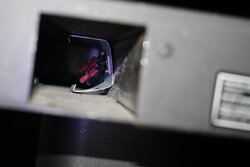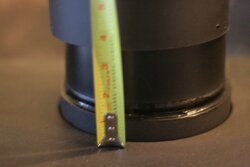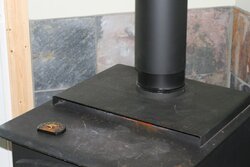Yes, it's the rheostat. It's unfortunate that the cord is so short because it controls on/off and blower speed, but it's probably intentionally designed like that to keep people from laying it on top of the stove and melting the components.I think the part sitting on the floor is the rheostat/switch box. The thermostat should be on the underside of the stove. Follow the wires with the stove blower unplugged.
Note that even with greater tension on the snap disk spring, the fan will take a while to come on the first time. Once the stove body is thoroughly warmed up, it should then stay on.
The big help is learning that the thermostat isn't in the controller. It's a little funny when I think about all the effort I made to warm up the control box!
Anyway, I'm optimistic that I have a much better place to start rectifying this now.
Thanks again.




